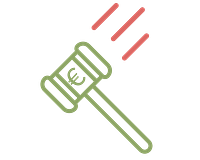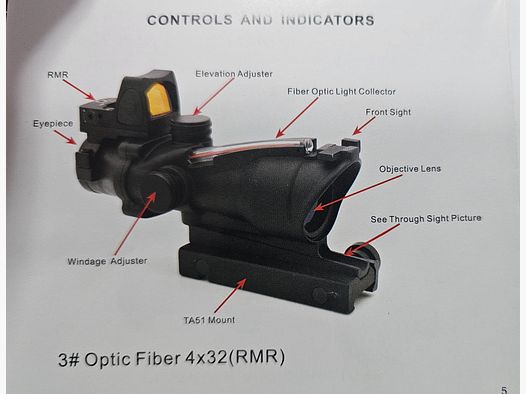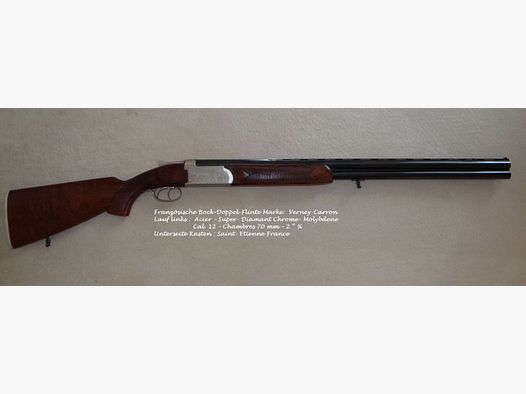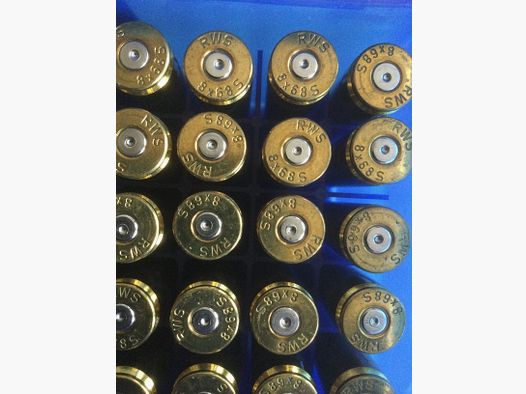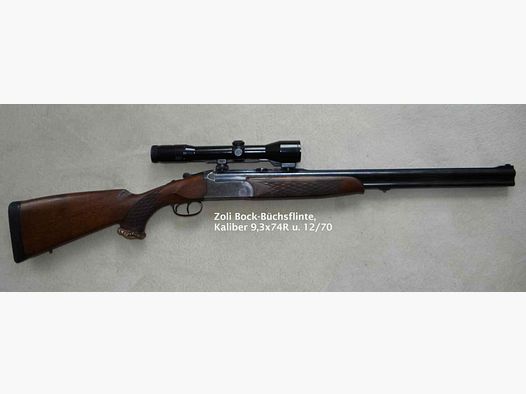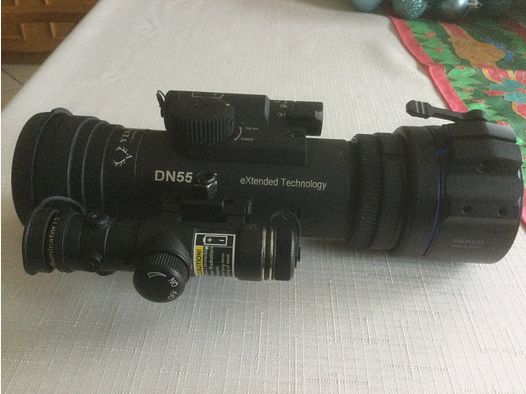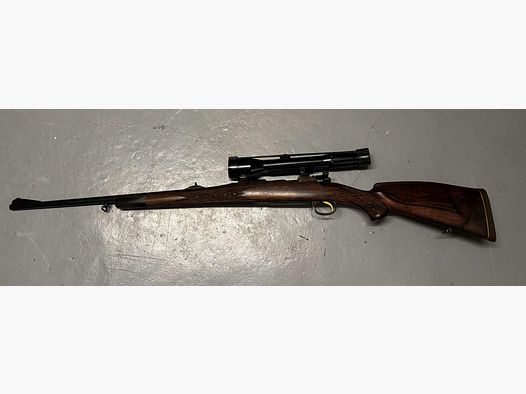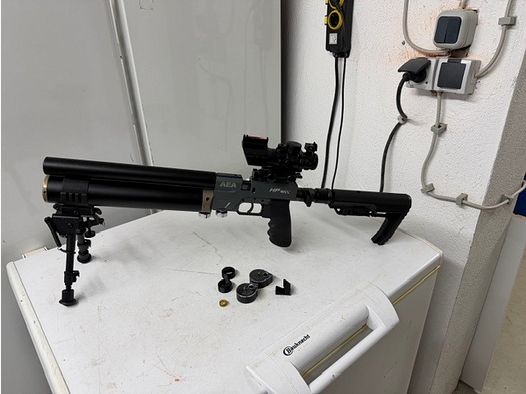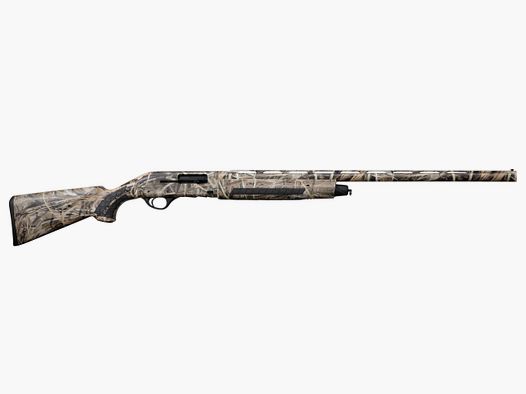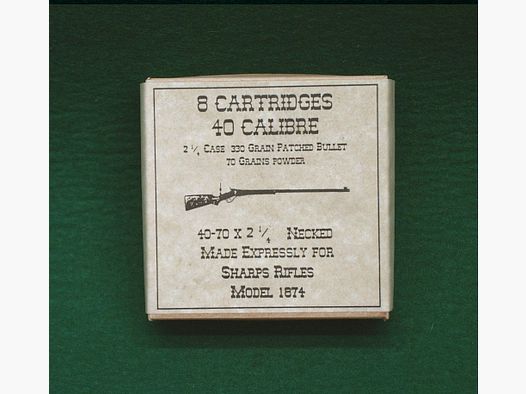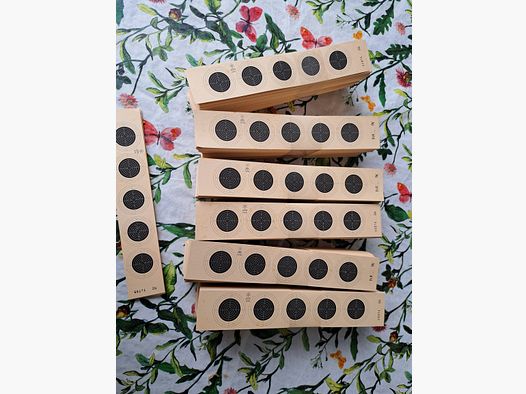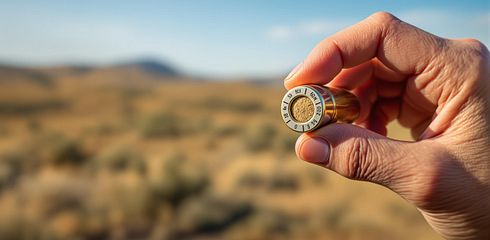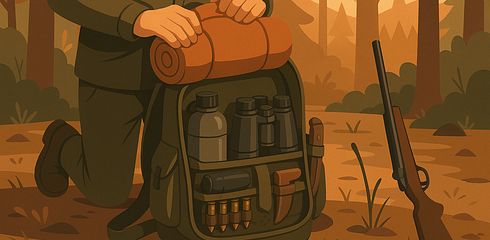Did you know that even the smallest deviations in powder charge can drastically worsen shooting precision? Here you will learn why this is the case and how you can avoid it:
- Powder Charge: The amount of gunpowder affects speed, pressure, and precision. Consistency is crucial.
- Muzzle Velocity: Fluctuations lead to inaccurate hits, especially at long distances.
- Types of Powder: Ball powder, extruded powder, and flake powder have different properties and applications.
- Case Preparation: Uniform cases significantly improve accuracy.
- Measuring Devices: Precise scales and tricklers help achieve consistent charges.
Quick Comparison of Key Factors
| Factor | Impact on Precision | Tip for Improvement |
|---|---|---|
| Powder Charge | Speed & Pressure | Use high-precision scales |
| Case Preparation | Consistency of Ammunition | Ensure uniform case volume |
| Bullet Weight | Trajectory & Energy | Optimize weight and seating depth |
| Environmental Influences | Measurement Accuracy | Stabilize and calibrate the scale |
Conclusion: Consistent powder charges are the key to precise hits. With the right tools, methods, and components, you can significantly improve your results.
Shooting Load Ladder - with GM Splinter Tip
Main Factors Affecting Ammunition Precision
After highlighting the importance of consistent powder charges, let's take a look at other key factors that influence shooting precision. For precise results, not only consistent powder charges are crucial, but also optimally matched bullets and carefully prepared cases.
Type of Powder and Performance
The type of powder used has a significant impact on the speed, pressure, and precision of the ammunition. Different types of powder have specific burning characteristics that directly affect performance. There are three main types of powder:
- Ball Powder: It can be precisely measured and burns slowly. A well-known example is Hodgdon CFE 223.
- Extruded Powder: Offers precise burn control and stable speeds but is more difficult to measure. A typical example is IMR 4064.
- Flake Powder: This powder burns quickly and delivers high energy but tends to be uneven in measurement. It is primarily used in handguns and shotgun shells.
The burn rate is a critical factor. Fast-burning powder is suitable for firearms with short barrels, while medium burn rate powder is ideal for standard rifle cartridges. Slow-burning powder is often used in magnum loads and high-powered rifle cartridges. The temperature sensitivity of the powder also plays a role, as it can affect burn rate and pressure, which in turn influences precision.
In addition to the type of powder, the properties of the bullet are also very important for accuracy.
Bullet Weight and Seating Depth
The weight of the bullet affects the trajectory, energy, and penetration power of the ammunition. Heavier bullets have more momentum but often require higher speeds to perform optimally. One grain equals 0.0648 grams. Lighter bullets fly faster but are more susceptible to wind influences, which can lead to deviations, especially at longer distances.
The seating depth of the bullet – that is, the distance the bullet must travel before engaging the rifling – is also crucial. A uniform seating depth ensures consistent interaction with the barrel, leading to more stable trajectories. Even slight changes of about 0.127 mm (0.005 inches) can significantly affect precision. Barnes Bullets recommends a jump of 1.27 mm to 6.35 mm or more for their TSX, Tipped TSX, or LRX bullets.
"In general, the less distance to the bore, the greater the accuracy."
Benchrest world champion Mike Ratigan emphasizes:
"Now and then, 2-3 thousandths change in seating depth can make the difference between average and peak accuracy."
The correct seating depth is a balancing act between precision and reliable functionality.
Another important factor for consistent results is the preparation of the case.
Case Preparation and Uniformity
Careful preparation of the cases is a fundamental step for precise rifle ammunition. Whether dealing with new or reused cases, uniformity is key.
"Second to the firearm, case preparation or case 'prep' is one of the most important contributors to accuracy."
Uniform case volumes are crucial for consistent speeds. Cases with identical outer dimensions but different weights can exhibit variations in internal volume, affecting pressure and speed. With a density of 8.53 g/cm³ for brass, a deviation of just 0.853 grain in identically trimmed cases can result in a difference of 0.1 grain in the powder space.
The depth of the primer pockets and deburred flash holes ensure a uniform ignition of the powder charge. These details can significantly affect the overall performance of the ammunition. A military test with 5.56 mm ammunition, for example, showed that the case volume of fired cases increased by 4% compared to new cartridges.
Case preparation includes steps such as cleaning, resizing, trimming, chamfering, deburring, processing the primer pockets, and neck turning. Uniform preparations minimize fluctuations in speed and pressure – a critical factor for long-range shots.
"A neck that is uniform in thickness helps improve both bullet release tension and case/bullet concentricity."
Problems from Uneven Powder Charges
Uneven powder charges are among the main causes of poorer shooting results. They lead to greater dispersion of bullet speed and significantly larger impact areas. These deviations affect both muzzle velocity and pressure – two critical factors that we will examine more closely.
Fluctuations in Muzzle Velocity and Pressure
When the powder charge is not constant, unpredictable speed deviations occur. These result from different burning characteristics of the powder. For example, one reloader reported a speed variation of 34 fps (about 10.4 m/s) when using 44.8 grains of IMR 4064 with Lapua cases and CCI 200 primers.
These fluctuations affect barrel vibrations, which in turn impact the bullet's trajectory. Additionally, pressure fluctuations lead to changes in barrel oscillations. These influence exactly when the bullet exits the barrel, which directly affects precision.
Another effect of uneven powder charges is insufficient energy transfer. Different pressures lead to varying impact patterns, as will be detailed in the next section.
Dispersion and Impact Size
The dispersion caused by uneven powder charges has a drastic effect, especially at longer distances. A powder fluctuation of just 0.1 grain in .308 cartridges can increase the impact areas by 50–100% at 1,000 meters. In the 6.5 Creedmoor caliber, a speed variation of 50 fps already causes a deviation of about 5 cm at 500 meters.
At 1,000 meters, a speed difference of just 40 fps can result in a vertical deviation of around 23 cm. However, sensitivity to powder fluctuations varies by caliber. Smaller cartridges often react more sensitively to charge differences, while larger calibers tend to be more tolerant. For example, one reloader achieved a standard deviation of only 9 fps with virgin Lapua cases, 43.0 grains of IMR 4064, CCI BR LR primers, and 175-grain SMK bullets.
Experience shows that consistency in powder charges is often more important than the theoretically optimal charge, which is subject to fluctuations. For long-range shooters, precise control of the powder charge to ±0.02 grain can make the difference between success and frustration.
How to Reduce Fluctuations in Powder Charge
Precise control over powder fluctuations requires the right tools, consistent practices, and a suitable environment.
Use Precise Measuring Tools
The key to uniform powder charges lies in high-precision scales. While many electronic scales offer an accuracy of ±0.1 grain, high-quality mechanical beam scales can achieve an accuracy of ±0.02 grain.
"To determine powder charges down to the individual grain, you need a high-precision scale that can resolve to 0.02 grain – that’s about the weight of a single grain of stick powder." – Bryan Litz
A large portion of the top 75% of shooters in the Precision Rifle Series (PRS) rely on the A&D FX-120i powder scale. This scale provides the precision needed for repeatable results – a worthwhile investment.
Cal Zant emphasizes:
"I think investing in a scale that can measure down to the individual grain is one of the best decisions I’ve made. It makes producing super-consistent, world-class ammunition easy and repeatable. For me, it’s worth it!"
Additionally, powder tricklers help bring the powder to the desired weight precisely. Many reloaders initially throw a lower charge and then trickle to the exact weight.
Besides the right equipment, consistent application of suitable methods also counts.
Apply Consistent Loading Methods
Consistency is often more critical than expensive equipment. Various factors influence the uniformity of powder charges, including the type of powder, the measuring device, and the handling by the user.
Ball powder is generally more evenly measured than stick powder. Mechanical powder measures often benefit from baffle plates in the powder funnel, which improve measuring accuracy.
The case preparation is also essential. Aspects such as neck tension and runout can significantly affect consistency. Therefore, careful and standardized preparation of all cases is indispensable.
A solid routine when loading can also help. This includes, for example, setting the powder column by lightly tapping the case before seating the bullet. Such methods positively affect chronograph readings.
However, even the best method can be affected by external factors.
Control Environmental Conditions
Place your scale on a stable, level surface and protect it from drafts and electrical disturbances.
Regular calibration is essential, and digital scales should be warmed up before use. Some digital models, like the RCBS Chargemaster, tend to have drift problems, requiring frequent recalibrations. For this reason, some reloaders prefer mechanical beam scales, as they often provide more consistent results.
Digital scales can also react slower to trickling and become inaccurate during the process. Here, mechanical beam scales score points for more reliable measurements.
Discover High-Quality Equipment on Gunfinder
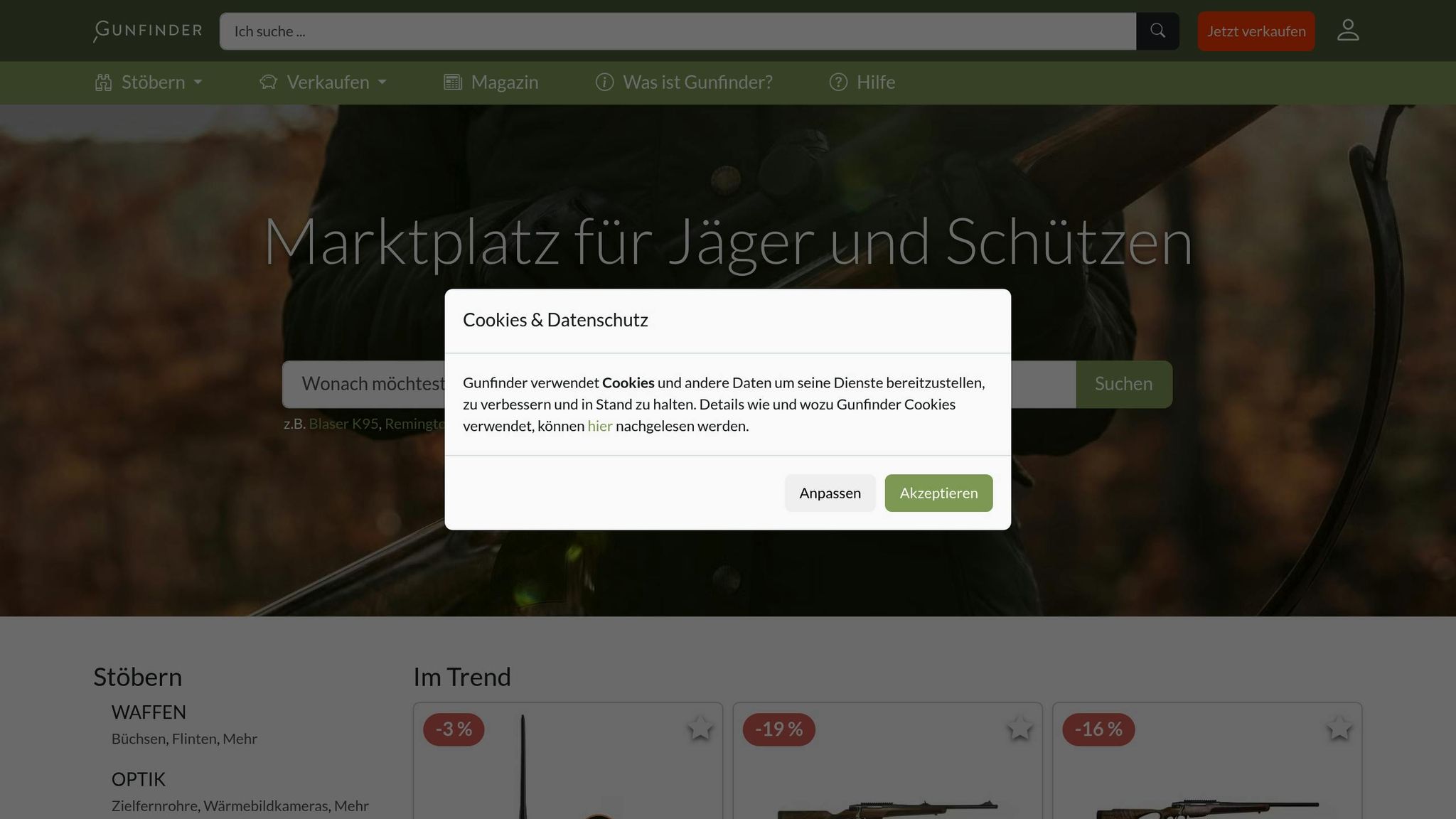
Once your loading methods are optimized, you can achieve even more precise results with the right equipment. Gunfinder offers a wide selection of reloading devices that meet your needs.
On Gunfinder, you will find everything from precise powder scales and tricklers to complete reloading sets. The platform lists both new and used equipment at attractive prices. Thanks to the search function, you can specifically look for models like the A&D FX-120i or RCBS products. User reviews provide helpful insights to help you find the right equipment for your budget and requirements.
sbb-itb-1cfd233
Select Components for Better Precision
For precise shots, it takes more than just a steady hand – choosing the right components such as powder, bullet, and their perfect matching plays a crucial role. Here you will learn how to improve your shooting results through targeted selection and adjustment of your equipment.
Find the Right Type of Powder
Choosing the right powder is essential. It should have a burn rate that matches your bullet, barrel, and cartridge size. Pay attention to good temperature stability and a fill density close to 100%, without exceeding the allowable pressure.
Jeff Siewart puts it succinctly:
“When we are looking for the smallest groups and best precision in rifles, we are actually looking for a powder that burns completely and fills the case as close to 100% loading density as possible without exceeding the allowable pressure.”
An example of this is Hodgdon Extreme powders, known for their consistent performance at different temperatures. Why is this so important? A speed variation of just 65 fps can cause a vertical deviation of about 16.5 cm at 800 meters. Therefore, a variation of a maximum of 30 fps is advisable for long-range shooters.
Additionally, the pressure development should be as close to the SAAMI maximum as possible to achieve the best possible performance. Powders with a higher relative speed can reduce the base pressure at the bullet exit and are often associated with smaller dispersion circles.
Match Bullets and Powder
Choosing the right bullet is just as important as selecting the powder. Bullet weight and powder charge should be adjusted to the characteristics of your barrel.
Heavier bullets require more powder, which increases chamber pressure. At the same time, longer bullets have more contact with the barrel, which also affects pressure. To find the best match, it is advisable to test various powder charges. The Optimal Charge Weight (OCW) method can help determine the most precise load node.
When combining different bullets and powders, always start with the lowest recommended powder charge and gradually increase it. Pay close attention to pressure signs. Manufacturer specifications and reloading data sheets are valuable guides in this process.
Discover High-Quality Components on Gunfinder
For the optimal assembly of your reloading equipment, Gunfinder offers a large selection of accessories and ammunition components. The quality of the components not only affects precision but also safety and maintenance effort.
Gunfinder makes it easy to find proven powders like Hodgdon, Vihtavuori, or Alliant, and bullets from brands like Sierra, Hornady, or Lapua. User reviews help you make the best decision. An additional advantage: Many components can be sourced directly from a supplier, saving on shipping costs.
Reloading also has economic benefits. It can reduce ammunition costs by 50% or more compared to factory ammunition. With the right components from Gunfinder, you can not only save money but also improve your precision in the long run.
Conclusion: Improve Precision Through Consistent Powder Charges
Even the smallest deviations can significantly affect shooting precision. For the .223 ammunition used in long-range F/TR competitions, a charge consistency of ±0.02 grain is required.
In summary, among the many factors that play a role in reloading, the powder charge is the easiest to control precisely. With high-quality measuring devices, consistent loading methods, and a controlled working environment, you can significantly enhance your results. Bryan Litz has shown in his tests that switching from thrown charges to charges measured with a Chargemaster significantly reduced the standard deviation of muzzle velocity.
Here, consistency is more important than perfection. Uniform charges lead to more stable muzzle velocities and more precise impact patterns. Practical examples demonstrate how positively consistent charges affect shooting results.
If you want to optimize your reloading practice, Gunfinder offers the right devices and components. From precise scales to reliable powder dispensers, you will find everything you need for uniform powder charges. Visit Gunfinder to complete your equipment and improve your results.
FAQs
How does the powder charge affect shooting precision, and how can I optimize it?
The powder charge plays a crucial role in the precision of your shots. Even small fluctuations in the amount can cause the impact circles to become irregular and the hit accuracy to suffer. To avoid such problems, precise and uniform dosing is essential.
Make sure to use powder that has a consistent quality and always measure the charge accurately. Even the smallest deviations can noticeably affect the outcome. With the right powder choice and careful handling, you can optimize the precision of your ammunition and achieve consistently good results.
How important is case preparation for uniform powder charges and precise shooting?
Why is Case Preparation So Important?
Case preparation is a critical step when it comes to precise shooting. It ensures that the primer sits correctly and evenly. The result? A uniform powder burn that significantly improves shooting accuracy.
By thoroughly cleaning your cases, carefully resizing them, and precisely adjusting the seating depth of the primer, you reduce fluctuations in powder combustion. This is particularly relevant for sport shooters and hunters who expect absolute precision with every shot.
How can I reduce fluctuations in powder charge and improve shooting precision?
To avoid fluctuations in powder charge and increase precision, it is crucial to weigh the powder accurately and evenly introduce it into the case. A reliable powder scale is essential to ensure consistent results.
Equally important is to precisely maintain the bullet seating depth, as this affects both powder combustion and muzzle velocity. Careful preparation and uniform loading play a central role in maximizing precision.
With the right equipment and the right approach, you can significantly enhance the performance of your ammunition.


